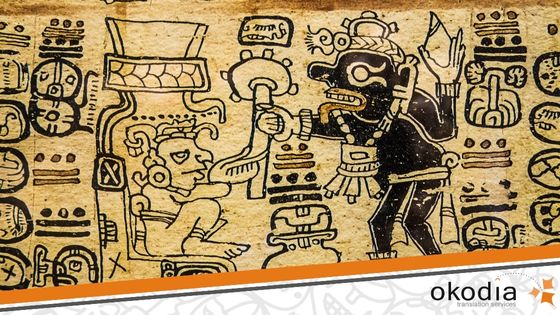Today, translation is a predominantly female profession, something that has made the recognition and greater visibility of female translators and interpreters increasingly necessary in recent years. That is why today we want to focus on one of the most important in history, “La Malinche”, interpreter for Hernán Cortés during the conquest of Mexico.
In addition to being the only woman playing a key role in the conquest, she is also one of the few known female interpreters from that period. However, in reality we know very little about her since the available information is scarce and confused. However, her story, like her talent, must have been amazing.
The confusing origins of La Malinche
The confusion starts even with her name, which is written as Malinche, Marina or Malintzin. It seems that her name at birth was Malintzin (in Nahuatl, her native language). It is possible that the name La Malinche, which is the one that is most commonly used, may be the result of the Spanish not being able to pronounce her name properly.
As for her origins, the most widespread version of the facts is that she was the daughter of a chief in the Aztec empire who died when she was still a child. After that, her mother was forced to marry another man.
This new union resulted in a son, which put into question and conflict the succession of Malintzin’s father and, therefore, who would inherit the chiefdom. The final solution they chose was cruel for Malintzin as she ended up being handed over to the Mayan chieftains of Tabasco as a slave.
However, while this is the story that people tell, we don’t know for sure if it is what actually happened. So let’s move on to an area where there is clear consensus, which is after Hernán Cortés arrived in these lands.
La Malinche’s role in the conquest
Hernán Cortés, in his campaign to conquer Mexico, clashed with the Mayan people of Tabasco and inevitably the Europeans were victorious. After this defeat for the Mayans, in an attempt to establish peace, the local chieftain gave Cortés several gifts, among which was Malintzin.
La Malinche as an interpreter
The Spanish realised that they had serious communication problems. That is where Malintzin came into play. The conquistador soon discovered the great value of that young woman. She understood Nahuatl, her native language, and Maya, the language of her masters in Tabasco.
So he decided to start using her as a Nahuatl-Mayan interpreter, while any Mayan-Spanish translation was done by Jerónimo de Aguilar (a Spanish prisoner captured by the Mayans who learned their language and was later rescued by Cortés). So with the help of these two interpreters, contact between the Spaniards and Aztecs was possible. This situation did not last long, because when Malintzin learned Spanish, she took over from Jerónimo, moving into the position of power.
La Malinche as adviser
Malintzin also acted as an adviser to the Spanish since she knew the local situation well and could advise them on the social customs of the natives. She also offered essential military and political information to help identify the plans of the indigenous people and try to reach agreements with them.
Malinche’s skills were decisive in the conquest of Mexico, which placed her in a position of power. The role of interpreter-adviser allowed her to quickly climb the social ranks.
The subsequent controversy
La Malinche became one of the most controversial figures in the history of Mexico. For generations, in the telling of the story she has been portrayed as a traitor for revealing secrets to the invaders through her knowledge of the language and culture.
But as we have said, the information we have about her is as scarce as it is confusing. Among other things, La Malinche was not named in the chronicle of Hernán Cortes and Aztec women did not have the right to speak in important public situations. This is probably where the modifications and disregard of here story began. The role she played was not in keeping with the ideas of that time.
Thanks to modern research and revisions of who La Malinche really was, the idea of her being traitor is increasingly questioned. Instead, it has begun to seem that she was also a woman rejected by her family, enslaved and violated. A woman who, ultimately, was not fully free and was fighting to save her own life.
It has also begun to be understood that La Malinche’s power as an interpreter during the conquest was greater than previously thought. She actively helped with the negotiations and created an understanding between cultures without which the conquest could have been much more violent and bloody. She was an intercultural adviser who had the gift of great diplomatic talent.
Back to the present day woman translator
Looking forward now, La Malinche teaches us that for good translation or interpretation, it is not enough to just know the language, since you also need to understand the culture. Without this, more catastrophes could happen than actually do.
This visibility and recognition of women in translation is necessary so that we can have female role models. At Okodia Translation Services, most of our professional translators are women and we also need to increase their visibility today. Every day we need to be ever more grateful for the work carried out by women translators in history.













